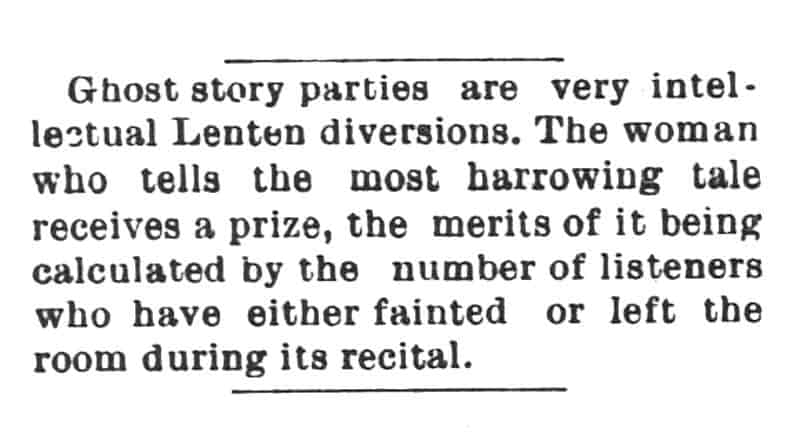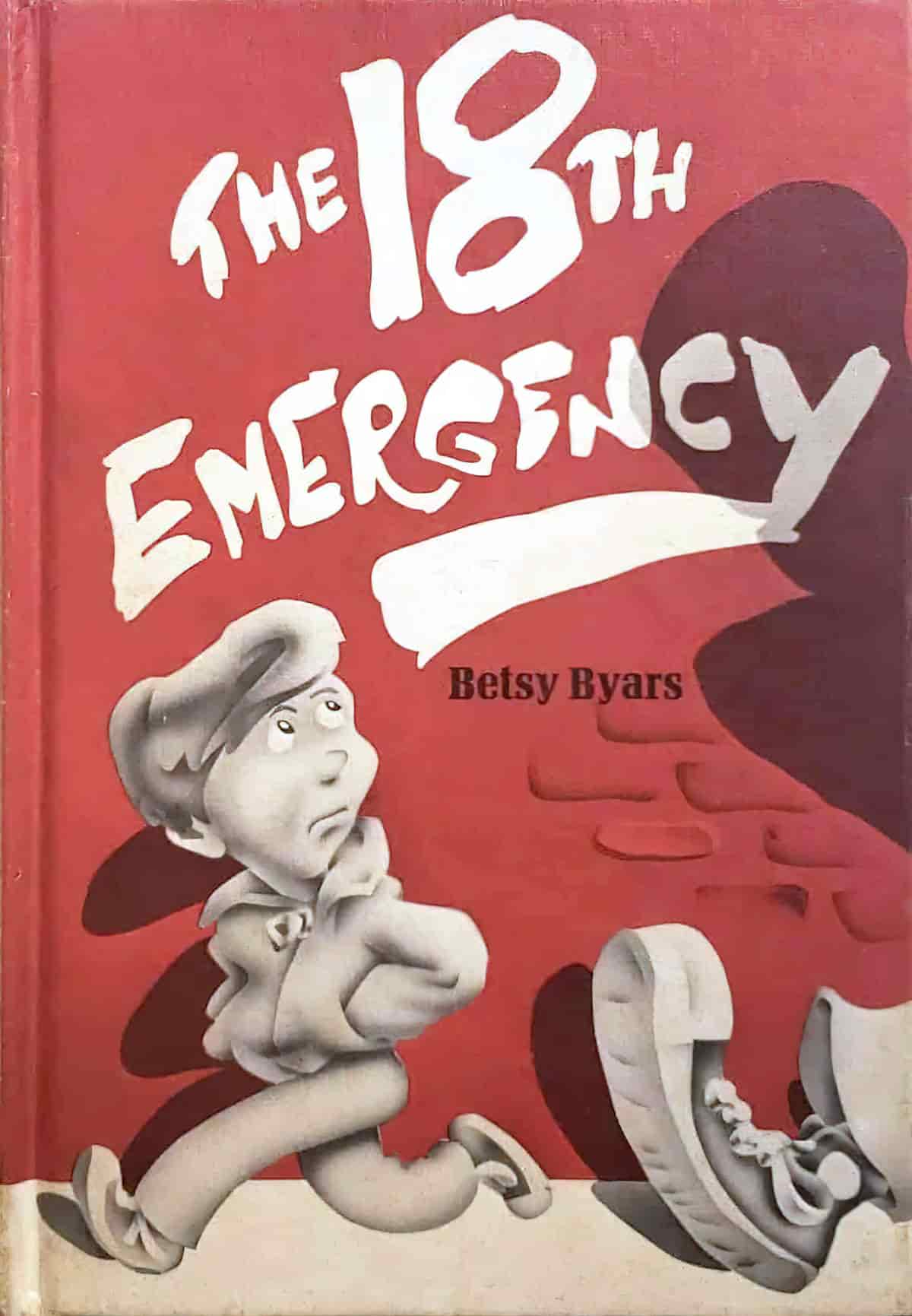There’s a subcategory of carnivalesque stories about visitors who outstay their welcome. These stories explore a deeper, broader human fear: The fear of home infiltration. There is little more terrifying than evil forces entering the home, which should be a refuge. In this case, the ‘visitors’ are the ghosts of two dead brothers. (Okay, I ruined it. Except the ending is right there in the title…)

Lingering ‘guests’ can feature in comedic plots, but are also well-suited to horror. “The Shadows On The Wall” by American author Mary E. Wilkins Freeman (1852-1930) was first published in a 1903 collection called The Wind in the Rose-bush and Other Stories of the Supernatural.
The author was about fifty when she published it. She had just gotten married for the first time after living for almost two decades with a woman friend she’d known since childhood. Single women were not uncommon in this time and place. Her social circle comprised arty and well-read women.
Here she writes about three middle-aged sisters, only one of whom has married, though she must have lost her husband because she’s moved back into the natal home. This is a story of domestic abuse, in which one brother casts terror over the rest of the household in the years after the elderly father passes away.
It’s possible Mary E. Wilkins Freeman didn’t think much of medical doctors. She married a non-practising medical doctor around the time she wrote this story. The husband was alcoholic, addicted to sleeping powders, ran about with other women and was into fast horses.
Anyway, you’ll see what she did to this fictional medical doctor. Catharsis? An outworking of fears around what he might do to her?
Mary E. Wilkins had just moved into her large, unhappy marital house at 207 Lake Avenue in the Borough of Metuchen in Middlesex County, New Jersey. She lived there until she died, but her husband had to move out, into an insane asylum.
She had this to say about the house:
I have a home in Metuchen with twenty-eight doors and five pairs of stairs, otherwise it is quite pretty. I suppose I shall spend most of my time, being naturally of a somewhat undecided turn, trying to decide which door to go in or out of, and what stairs to descend.
Mary E. Wilkins Freeman
I suspect from this, the author had a thing about doors and found them a little uncanny. She’s not the first and won’t be the last to feel this way about the uncanny liminality around corridors and doors. She utilises the symbolism of domestic architecture in this ghost story.
CAST OF CHARACTERS
The first two sisters form a familiar spinster-sister duo: The tall, thin sister and the short, plump one. The thin one is of course school ma’am-ish and severe. The other is less intelligent but far more congenial. (For another example of this spinster-duo in fiction see Kate DiCamillo’s Mercy Watson series.)
CAROLINE GLYNN
She was elderly, tall, and harshly thin, with a hard colourlessness of face. She spoke not with acrimony, but with grave severity.
“The Shadows On The Wall”
REBECCA ANN GLYNN
Rebecca Ann Glynn, younger, stouter and rosy of face between her crinkling puffs of gray hair, gasped, by way of assent. She sat in a wide flounce of black silk in the corner of the sofa…
“The Shadows On The Wall”
MRS STEPHEN BRIGHAM (emma glynn)
Emma is separate from her sisters because she married. As in many families with sisters, there has to be a ‘designated pretty one’, and Emma is the pretty one here. However, especially in grief, all of these middle-aged sisters are looking pretty similar these days. (Age is a great leveller.)
the one beauty of the family. She was beautiful still, with a large, splendid, full-blown beauty; she filled a great rocking-chair with her superb bulk of femininity, and swayed gently back and forth, her black silks whispering and her black frills fluttering.
“The Shadows On The Wall”
Since she married, we might think she moved out. But apparently she occupies the front chamber of the house, which the father left to all of his children to live in for as long as any of them should need it.
EDWARD GLYNN
Just died. The three sisters are grieving. He’d been sick in bed for just a few hours with some kind of gastric ailment.
Just before he died, Henry had a blazing argument with him. Rebecca overheard from the south parlour.
Edward had been living in Henry’s house our of necessity. He wasted the money given by Mr Glynn, their father.
HENRY GLYNN
As the conversation takes place between sisters, the other brother Henry is elsewhere in the large house. To look at, he most resembles Caroline — tall and thin and harsh. (Notice also the phrenology of the era — the racist tendency to deduce personality type via the shape of someone’s head.)
Both had the same hard delicacy of form and feature, both were tall and almost emaciated, both had a sparse growth of gray blond hair far back from high intellectual foreheads, both had an almost noble aquilinity of feature. They confronted each other with the pitiless immovability of two statues in whose marble lineaments emotions were fixed for all eternity.
“The Shadows On The Wall”
Henry is a physician.
Emma empathises with Henry. She speculates that because Henry is a hard worker and prudent worker, he would have been jealous that Edward appeared to live on their father’s money.
Today we might call Henry a sociopath. In an inversion on the Save The Cat writing technique to engender reader empathy, this guy once killed a cat because she scratched him.
Still, the sisters try to persuade themselves that there’s no real reason to be afraid of the other brother, the one who kills cats.
Henry doesn’t seem very sad that their brother Edward just died.
WHAT HAPPENS IN “THE SHADOWS ON THE WALL”
SITTING AROUND GRIEVING IN A PARLOUR
On a cold, gloomy day in autumn, three sisters sit in a parlour, grieving the recent death of their brother Edward. Their other brother, Henry, is kind of scary, but they try to persuade themselves he’s fine. Right before Edward died, one of the sisters overheard the two brothers having a blazing row.
At dusk the three sisters sit in the study, a ‘large front room on the ground floor across the hall from the south parlour’ (near the bedroom where Edward died). One sister sews, another writes invitations to the funeral. One sister tells another to fetch a lamp.
ONE SISTER KNOWS THAT EDWARD HAS COME BACK AS A GHOST
But Rebecca doesn’t want to get the lamp. She’s afraid of it, for some reason. But she does as she’s told. She brings back a lamp. But she doesn’t want to position the light where it’s of any use. She eventually puts it where she’s told, then shades her eyes.
The other two sisters think she’s acting weird.
The sewing sister soon works out why, though. The lamp reveals the shadow of a man cast on the one wall which doesn’t have a bookshelf.
Rebecca reveals the shadow has been there every night since Edward died. The sisters agree it looks like Edward! The items in the room have already been moved around. That shadow is not cast by anything inside the room, Rebecca says.
THE PSYCHO BROTHER GETS VIOLENT
Henry appears. He sees it too. Terrified, he flies into a frantic rage, turning furniture over. He breaks Edward’s favourite chair.
He’s sorry-not-sorry for scaring his sisters by his rage. Finding nothing he laughs, and says there’s no accounting for shadows.
The sisters decide to join Henry in the south parlous where it isn’t as damp. Henry reads the newspaper while the women sew. At nine o’clock Henry returns to the study.
CREEPING AROUND, WALKING ON EGGSHELLS
The sisters wonder what he’s doing in there. So they follow quietly. Peering through the crack in the door, the married sister tells the others that Henry looks possessed by a demon, thrashing around with an antique sword at nothing.
The sisters go to bed. Each sister has her own chamber. Henry is still up. Point of view zooms out and now focuses on Henry, who doesn’t go to bed until midnight, poking around for the ghost-shadow.
The funeral is the following day. Relatives join the Glynn siblings in the south room. No one dares go into the study. Except Henry. He waits until the others go to bed and then takes the lamp in. The shadow leaps to life.
HENRY’S MYSTERIOUS TRIP
Next morning. At breakfast Henry announces he’s going to the city for three days. He doesn’t go out much, so this is a surprise. He’s got patients to attend to. He says he’s off to see an old school friend, also a doctor.
Henry doesn’t come home.
The sisters have kept out of the study, but the married sister feels compelled to take a peek in the study at the ghostly shadow. Holding her skirts so they don’t rustle, again she peeks through the door.
A visitor at the front door! Rebecca answers it. Someone has come with a telegram.
A DOUBLE HAUNTING
When the sisters reconvene in the south parlour, they swap information: Now there are two shadows of men on the study wall AND their brother Henry is dead.
EXTRAPOLATED ENDING
If the ghost of Edward wanted to seek revenge, wouldn’t he just kill his brother then leave Henry in the purgatory of Earth while he continues on his merry way to the pearly gates? Or does he wish to stay and torment his murderer brother forever?
Perhaps this is the house carrying out these evil deeds, using the men as its instruments. Who knows!
In Henry James tradition, there’s no way to know what’s really going on. We don’t even learn how Henry died. Was he bucked off his horse? What did that other doctor have to do with anything?
We also don’t know how Henry killed Edward, but we can deduce he used poison. He has access to all sorts of medical pills and potions. Besides, didn’t Sherlock Holmes point out that doctors make the most dangerous criminals?
But the fact is, in those days you could easily buy arsenic from the local shops. It was labelled rat poison, but was almost entirely made of arsenic.
This is an atmospheric story. This would have felt like realism in its day, bringing an everyday setting with everyday people face-to-face with the supernatural. Today it feels a bit OTT, so the novelty of the realism-supernatural genre blend doesn’t have the same effect.
RESONANCE
Rod Sterling — The Twilight Zone guy — was inspired by “The Shadows On The Wall” — or stories like it — for his Night Gallery series (season 1, episode 3) which aired in 1970:
Elaine Latimer has been dreaming of a certain house for years and finally sees it in real life. / Sickly Emma Brigham dies, but her shadow is still visible on one wall of the family mansion.
IMDb

SEE ALSO
“The Shadow” by E. Nesbit
